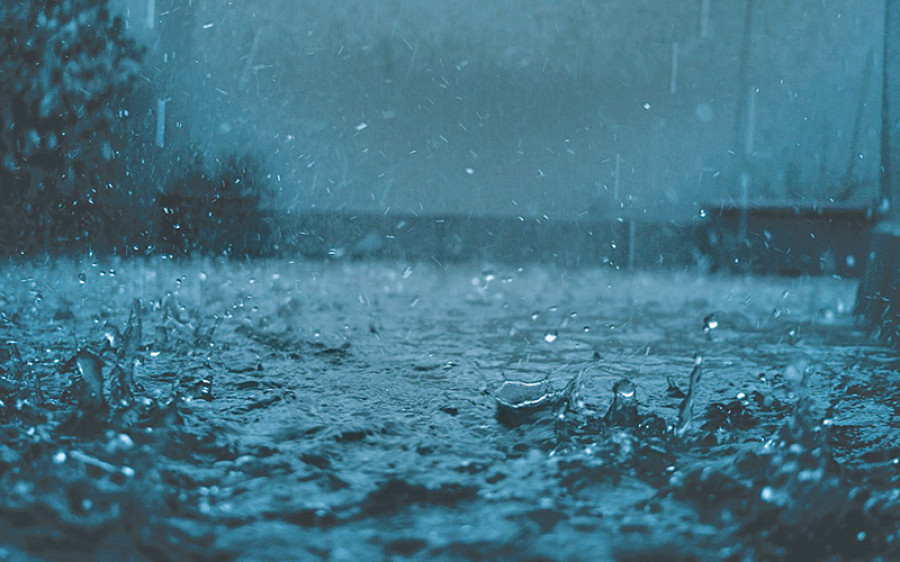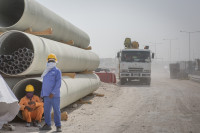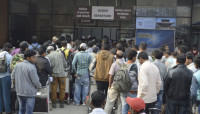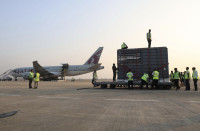Opinion
Prepare for next year
After the death of my mother last April, I thought I would not write for at least a year. But when I saw a picture in Kantipur taken by photographer Narendra Shrestha of the blanket-wrapped, lifeless body of eight-year-old Kamal Sada from Koiladi floating on the muddy water, I could not resist writing.
Surendra Bahadur Sijapati
After the death of my mother last April, I thought I would not write for at least a year. But when I saw a picture in Kantipur taken by photographer Narendra Shrestha of the blanket-wrapped, lifeless body of eight-year-old Kamal Sada from Koiladi floating on the muddy water, I could not resist writing.
Categorically, no matter how hard and painful our lives may have been, we all deserve decent funeral rites when we die. Kamal’s entire village was waterlogged, and he could not be buried since not even a single square foot of dry land was left, and so had to be given a water burial. I recall the towering flames of my mother’s funeral pyre on the banks of the Bagmati River next to the sacred Pashupatinath Temple. But looking at the picture, I thought that we, as a society and a nation, had all failed to offer justice to Kamal Sada.
Monsoon woes
The monsoon is a yearly occurrence in Nepal and in the entire South Asian subcontinent. The rains beat down on the land, and torrents roar through hills, gorges, valleys and plains to ultimately mix with the muddy pool of water in the Bay of Bengal. The monsoon especially affects Nepal, India and Bangladesh. Thus, this hydrological concern must be harnessed by a win-win strategy for all three countries.
The monsoon has been a boon for the subcontinent. It turns the ground green and provides grain to households. But rapid deforestation, changes in land-use patterns, and above all, climate change have turned it into a visible curse. Due to lack of integrated efforts to tackle the monsoon’s ill effects, nature often goes on a rampage and takes the form of mudslides in the hills and floods in plains. It has resulted in the unbearable loss of life and livelihood, year after year.
No finger pointing
We knew that monsoon would come, we knew when it would come, and we perfectly knew how it would come. But we never seriously try to understand why the patterns behind monsoon, and its growing intensity. Therefore, the massive flood in the Tarai is not just a natural catastrophe. We need to better prepare for such recurring disasters.
In reality, we as a nation can’t escape from the truth by only pointing our index finger at our politicians, bureaucrats and the state machinery. They are doing their utmost despite having limited resources in confronting humongous challenges, mostly when things go wrong. But on the same note, we can’t just bury our heads in the sand and always deal with these catastrophes with a ‘fire fighting mentality’ and do nothing towards strategic prevention.
Security for all
As a child, I was always provided the statement that, “The Koshi River is the sorrow of Bihar.” But witnessing the recent inundation of the southern Tarai plains, the dynamics of sorrow has undoubtedly shifted from Bihar to Nepal. Between the lines of expert speculation, media reports and ground realities, it would be worthwhile to learn a lesson from our good southern neighbour about how they manage to ensure security for their citizens. If the Netherlands, where one-fourth of the territory lies under sea level, can endure the ferocity of water through strategic planning and down-to-earth water management, what prevents us from thinking and acting in similar fashion?
After the floods of August 2017, it seemed as if Nepal was no more a landlocked country. The entire southern plains have been flooded. The murky waters swept away lives and livelihoods, and roads and bridges. The iconic photo of an aircraft stranded on the runway, belly-deep in water, captured the scale of devastation. But the hopes of Nepalis are still alive. Let’s honestly create a two-pronged strategy at this juncture. One, give the monsoon affected hills and Tarai due national attention. And two, let’s make high dams, dykes and levees to hold the monsoon waters in the laps of the thousands of hills nature has blessed Nepal with—so that the constitutionally assured security of the citizens of Nepal is guaranteed.
Finally, if we want a forward leaning country, it can’t be envisaged and built with chicken-hearted thinking. We can spend ages cursing the characters and events written on the pages of history. However, as the people of a sovereign nation, nothing must obstruct us from paving our proper future that grants complete security to the people, including from the monsoon. Lastly, Kamal Sada, the people of Nepal feel for your sad demise. May your soul always rest in peace.
- Sijapati is a graduate of the Royal College of Defence Studies, London and a former soldier in the Nepal Army




 14.12°C Kathmandu
14.12°C Kathmandu









%20(1).jpg&w=300&height=200)

